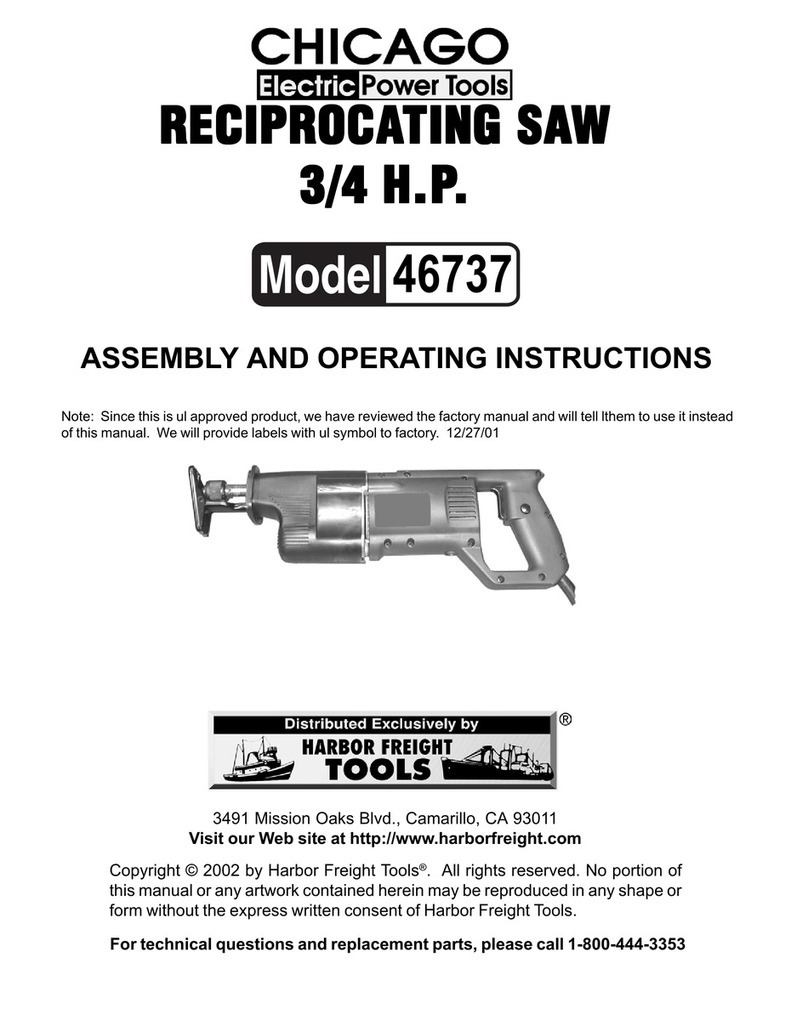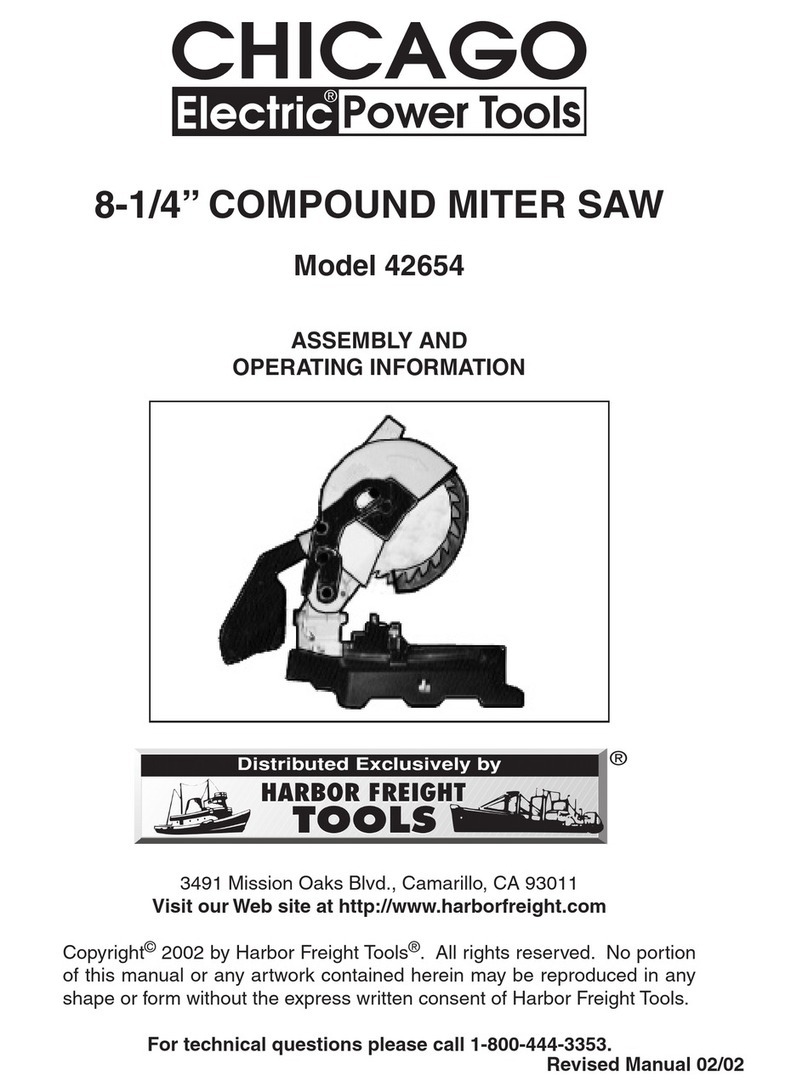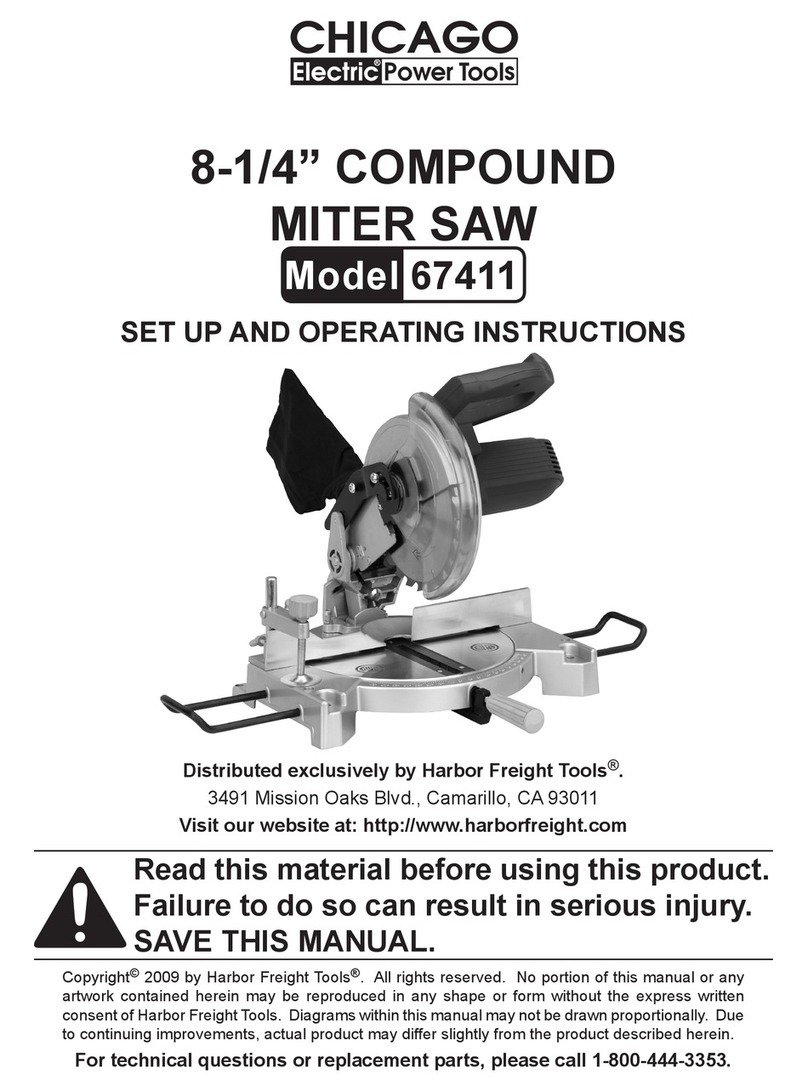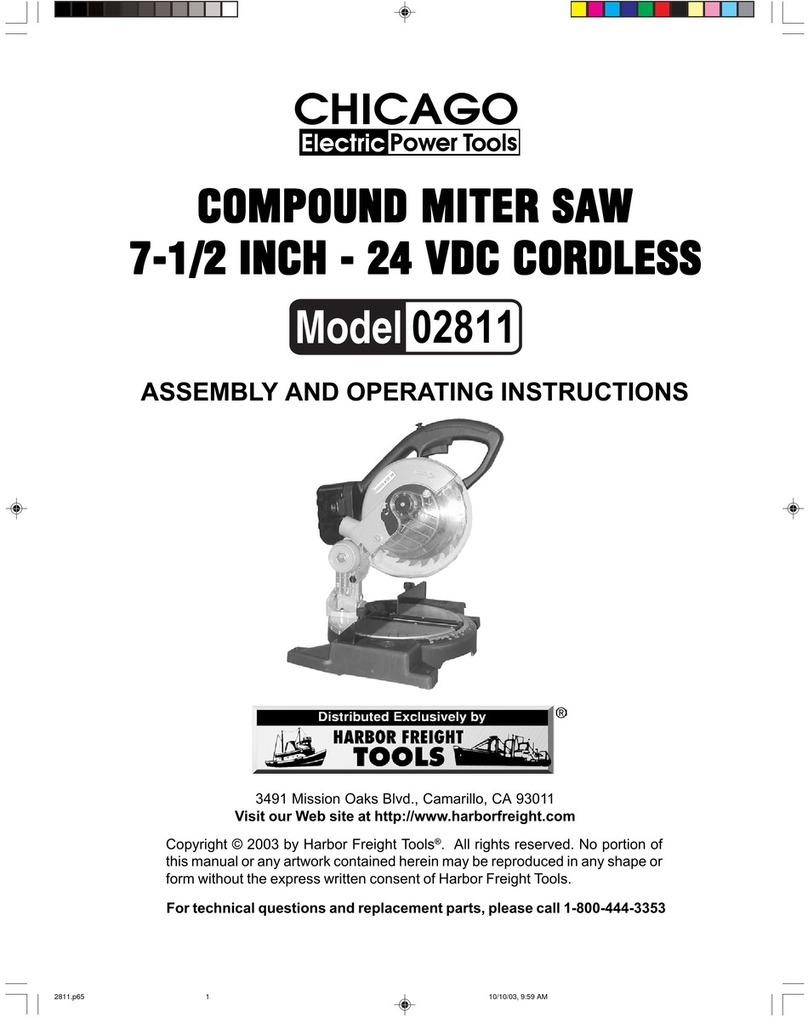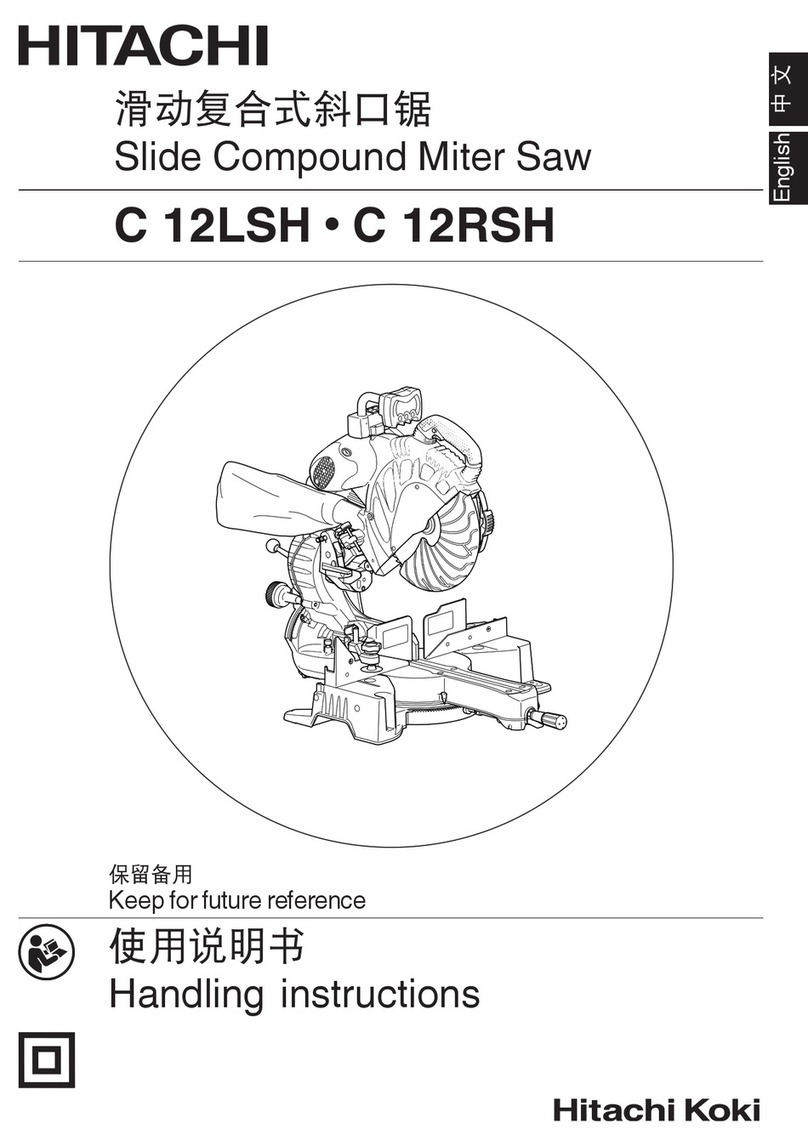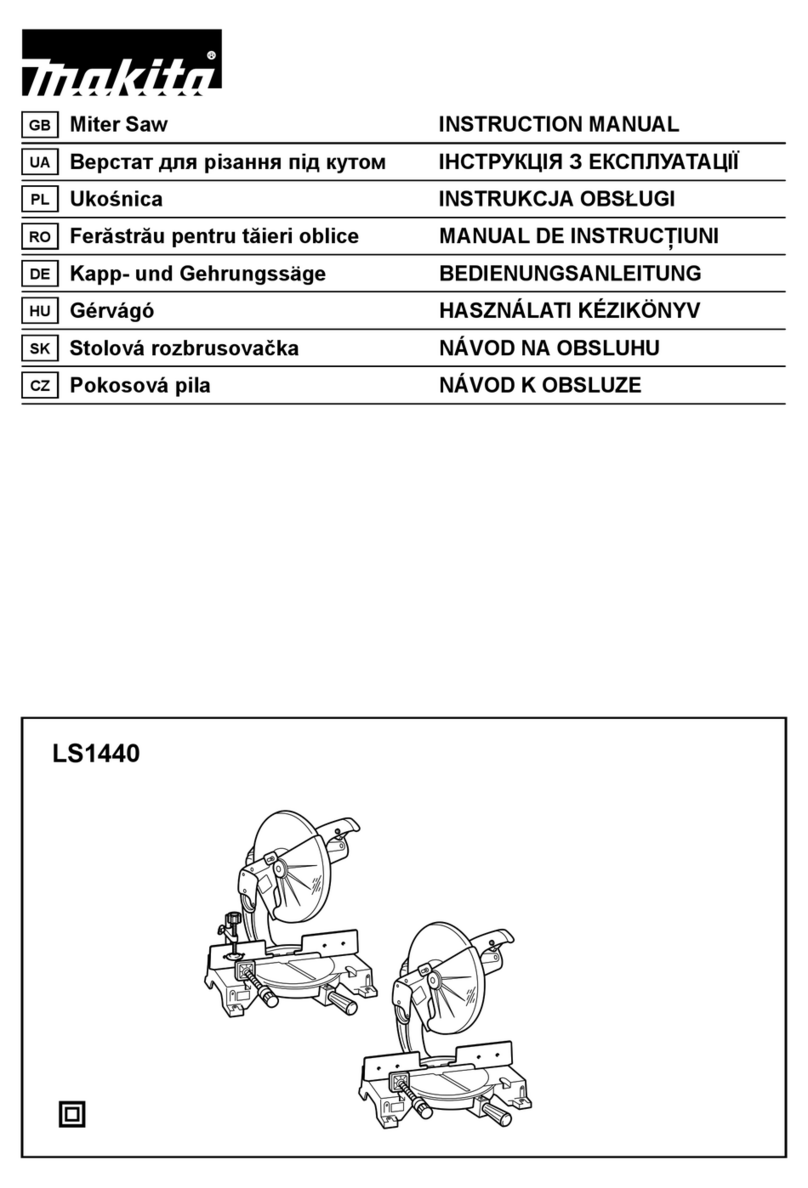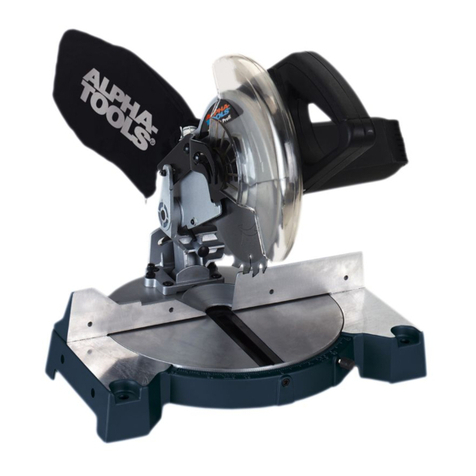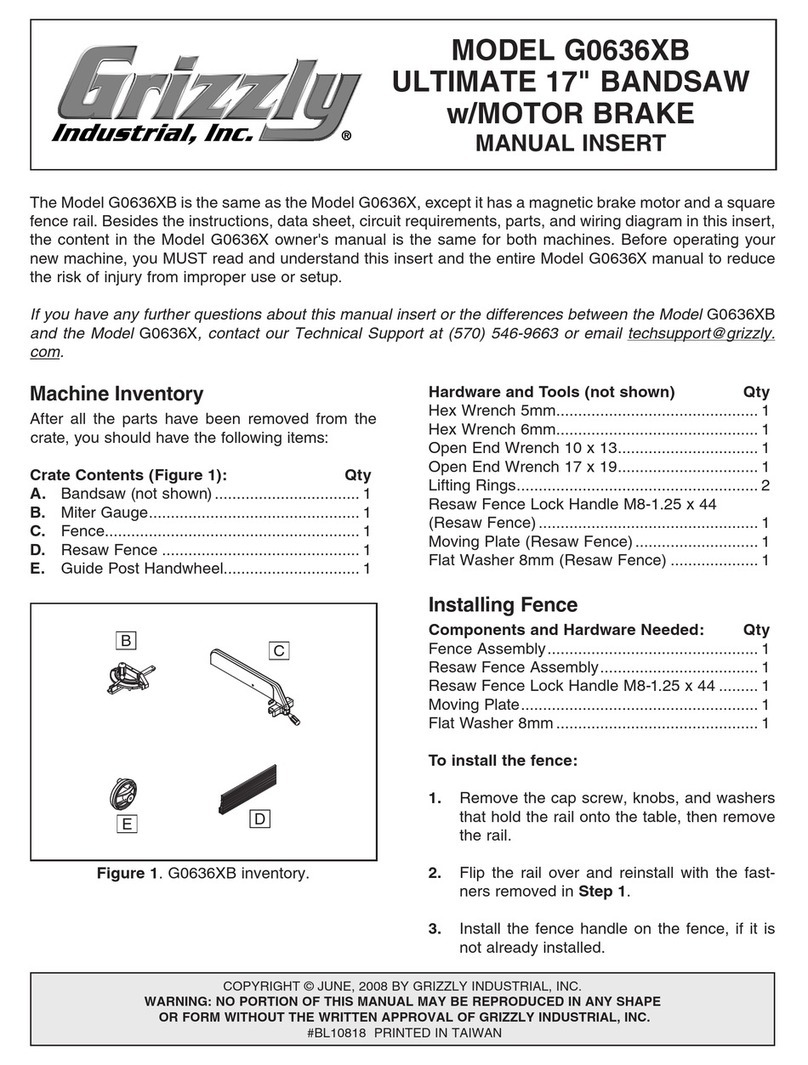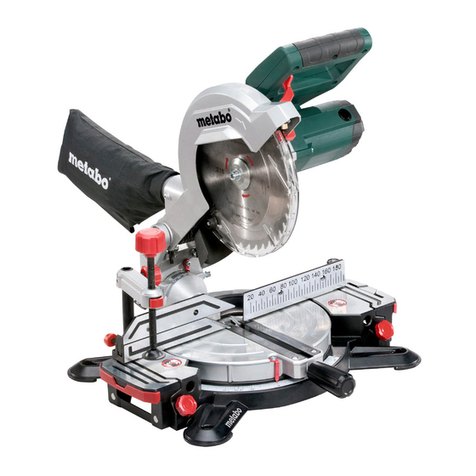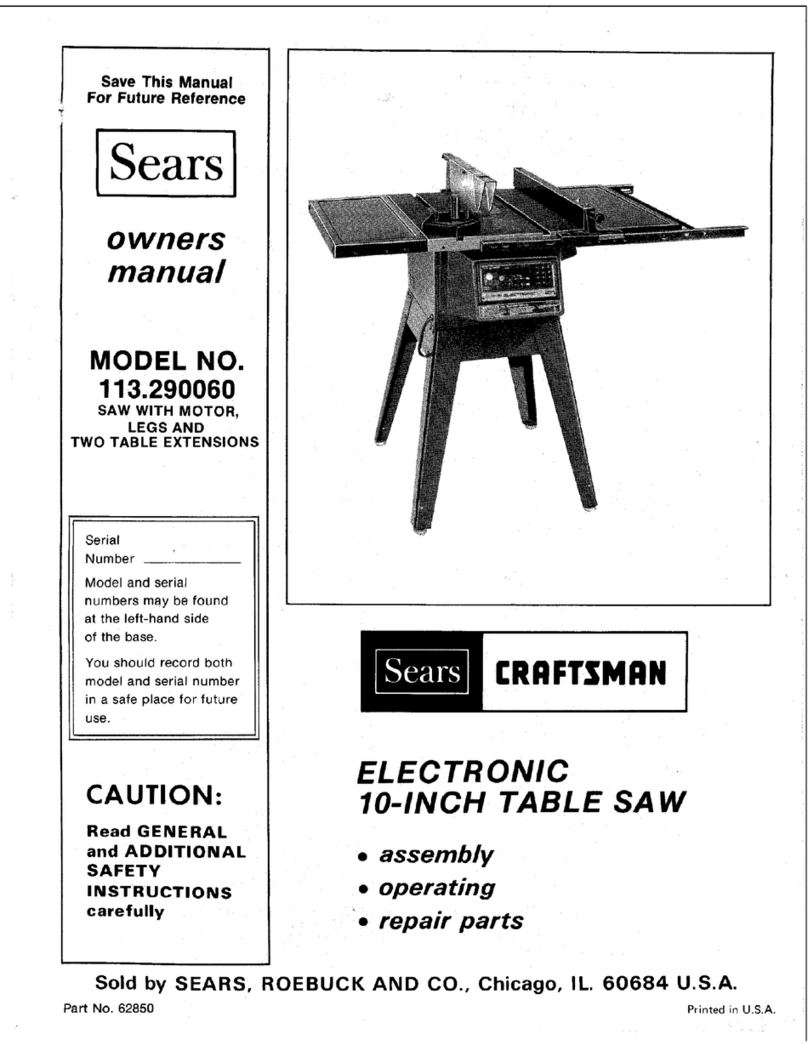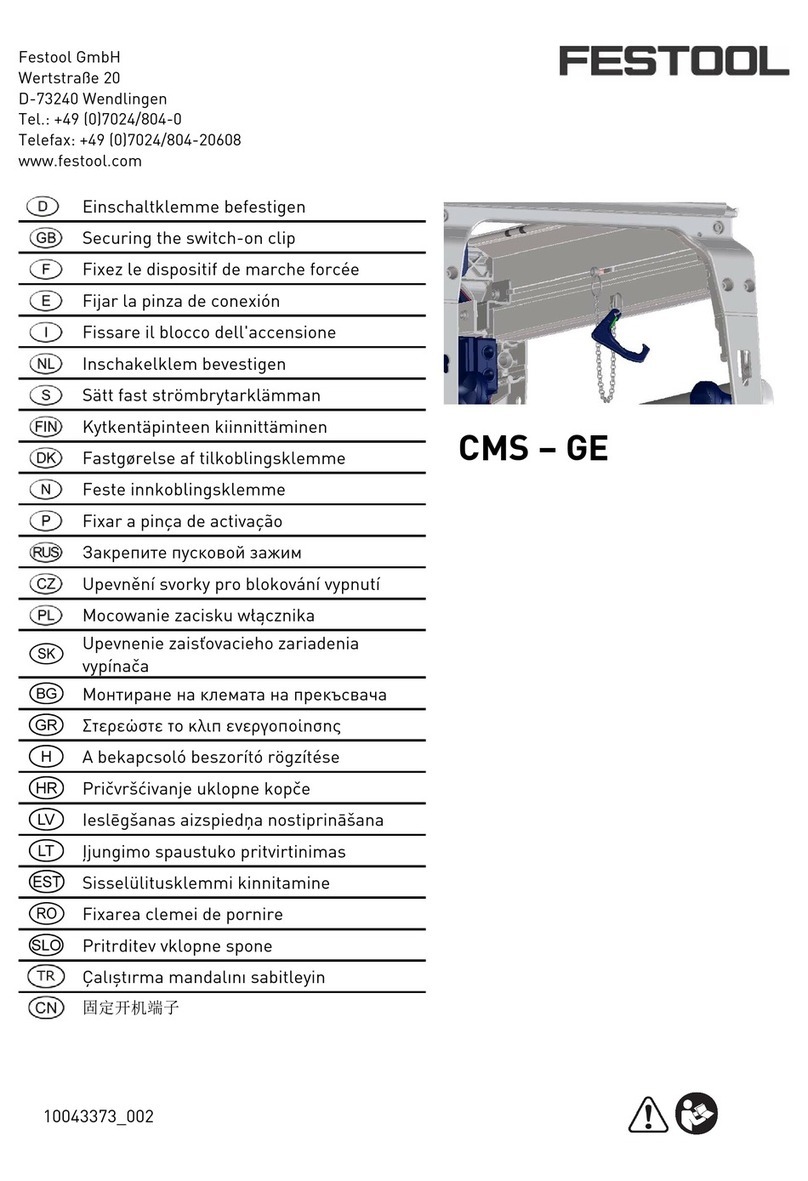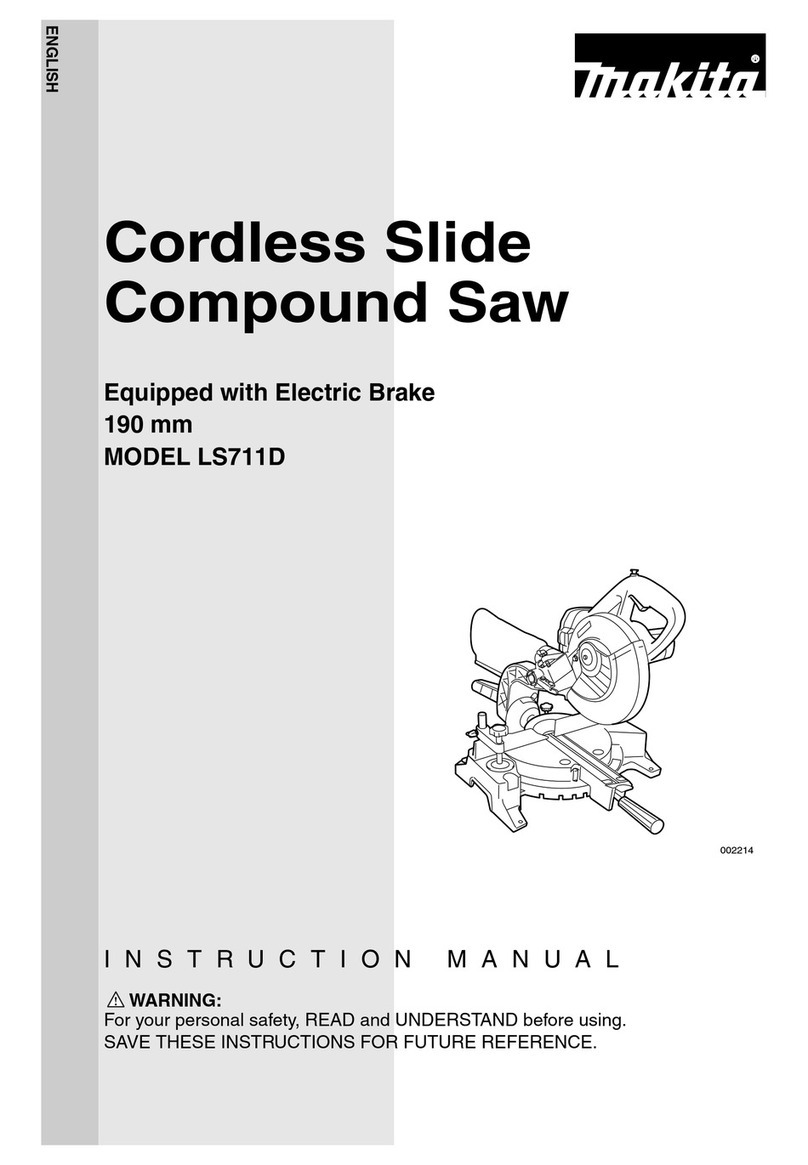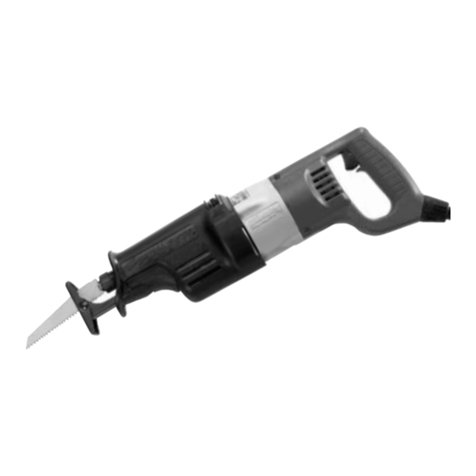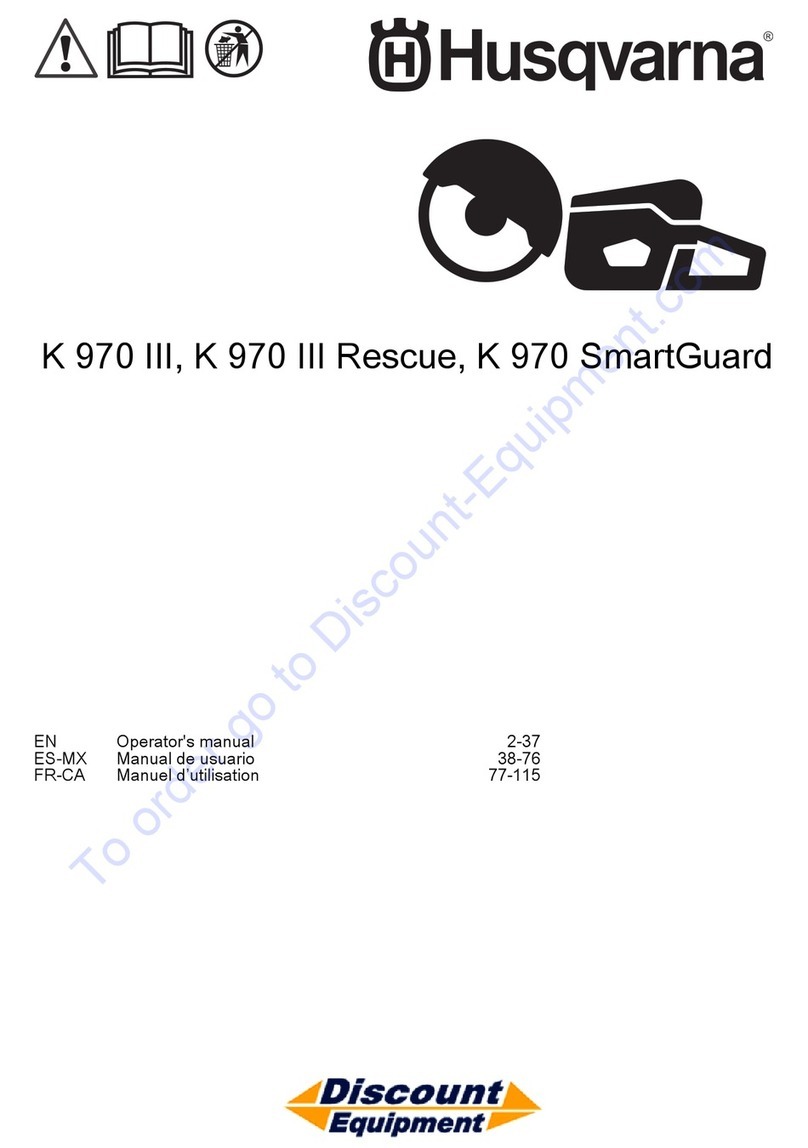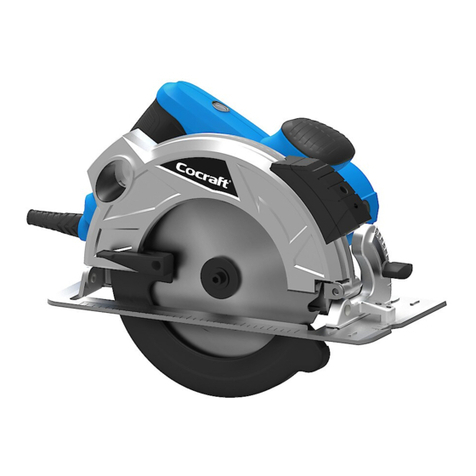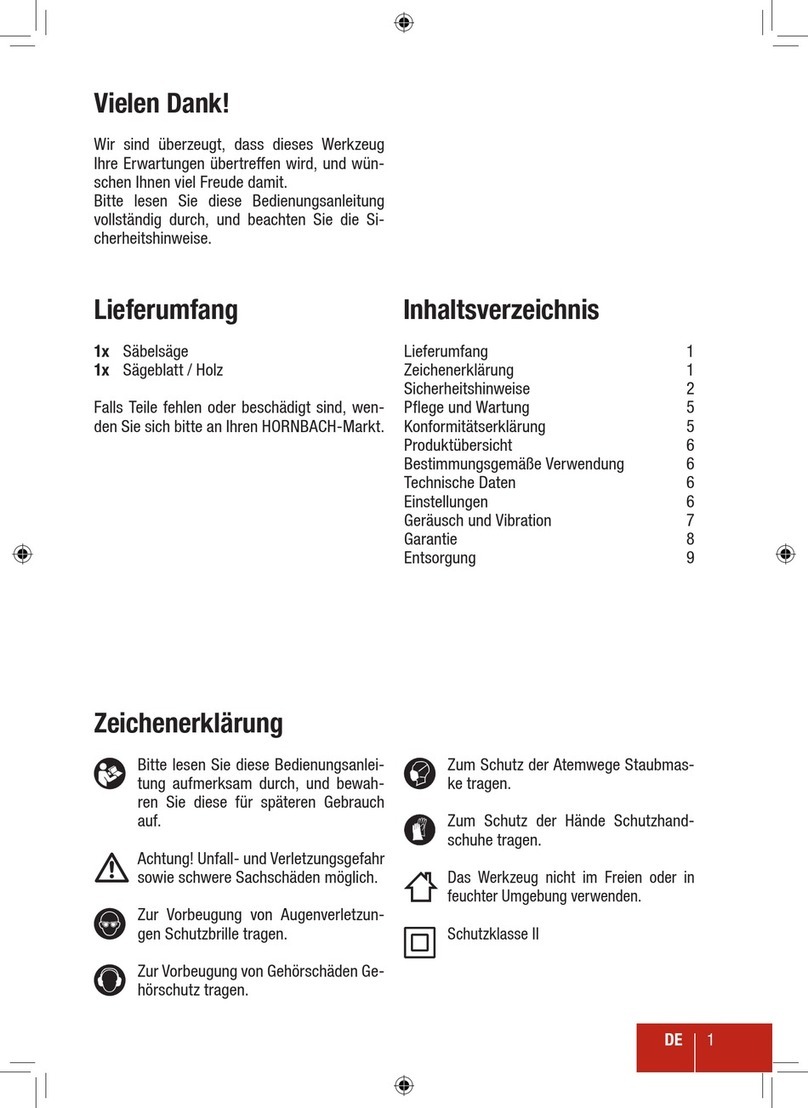
SKU 1624 For technical questions, please call 1-800-444-3353. Page 5
Do not use an adapter to connect this9. tool to a different outlet.
Cutoff Saw Safety Warnings
CHECK WHEEL PRIOR TO USE.1.
Check for any cracks or other aws in
the wheel that would indicate struc-
tural damage. If any are detected,
discard immediately. Never start the
saw if you or any one else is in line
with the wheel.
SECURE WORK. Use the Vise2. Clamp Assembly at all times to se-
cure your work.
DO NOT REMOVE THE SAFETY3. CHAIN.
FOR METAL CUTTING USE ONLY.4. Do not use to cut wood, masonry,
magnesium, plastic, or any other non-
metallic material. Never mount any
wheels not designed for metal cutting
operations.
ALLOW STOCK TO COOL AFTER5.
CUTTING. Do not use uids to cool
materials faster. Allow to cool at a
normal rate.
DO NOT OPERATE WITH ANY6. GUARD DISABLED, DAMAGED,
OR REMOVED. Moving guards
must move freely and close in-
stantly.
The use of accessories or attach-7. ments not recommended by the
manufacturer may result in a risk of
injury to persons.
When servicing use only identical8. replacement parts.
Only use safety equipment that has9. been approved by an appropriate
standards agency. Unapproved
safety equipment may not provide
adequate protection. Eye protection
must be ANSI-approved and breath-
ing protection must be NIOSH-ap-
proved for the specic hazards in the
work area.
Industrial applications must follow10. OSHA guidelines.
Maintain labels and nameplates on11. the tool. These carry important safety
information. If unreadable or miss-
ing, contact Harbor Freight Tools for a
replacement.
Avoid unintentional starting. Prepare12. to begin work before turning on the
tool.
People with pacemakers should13. consult their physician(s) before use.
Electromagnetic elds in close prox-
imity to heart pacemaker could cause
pacemaker interference or pacemak-
er failure.
WARNING: Some dust created by14. power sanding, sawing, grinding, drill-
ing, and other construction activities,
contains chemicals known [to the
State of California] to cause cancer,
birth defects or other reproductive
harm. Some examples of these
chemicals are:
• Lead from lead-based paints
• Crystalline silica from bricks and ce-
ment or other masonry products
• Arsenic and chromium from chemi-
cally treated lumber
Your risk from these exposures var-
ies, depending on how often you do
this type of work. To reduce your
exposure to these chemicals: work in
a well ventilated area, and work with
approved safety equipment, such as














